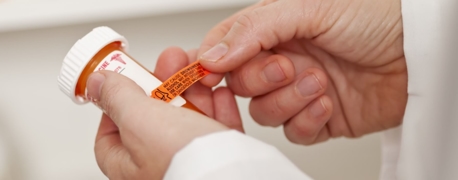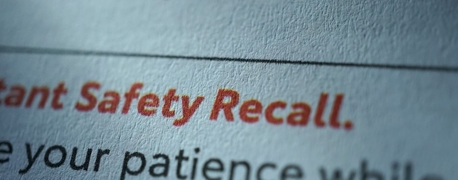Product Recalls: What You Need to Know

Product recalls serve as a critical safety net in our consumer-driven society, acting as a necessary response to protect public health and ensure product integrity. These recalls are not just limited actions but encompass a wide array of products that touch nearly every aspect of our daily lives. From the food we eat and the cosmetics we apply to the cars we drive and the medical devices we rely on, the scope of product recalls is vast and varied. They represent an essential mechanism in addressing the risks posed by defective or unsafe products, ensuring that consumer welfare is not compromised.
The 1982 Tylenol Recall
A nationwide recall of all Tylenol products was ordered in 1982 after seven people died between September and October of that year. The cause was determined to be poisoned pills, but not before Johnson & Johnson had responded quickly with not only the recall order but also by prioritizing consumer safety over their bottom line. The corporation started a public campaign warning against the painkiller and set up a hotline for consumers to get advice, setting a precedent for how to respond to a crisis such as this.
The 2010 Toyota Recall
Approximately 8 million Toyota vehicles were recalled in 2010 after an issue with the gas pedal in certain models was discovered to cause unwanted acceleration which was believed to have caused 89 deaths throughout the previous decade. The recall cost Toyota roughly $2 billion, and the Justice Department issued the company a $1.2 billion fine in 2014 as they sought to avoid prosecution over their knowledge of the dangers.
The 2016 Samsung Galaxy Recall
The Galaxy Note 7 was sure to be Samsung’s flagship phone in 2016, until the phones started catching fire at random. A recall was finally issued after the cause could not be determined while the problem persisted and videos went viral. The company also pushed a software update in an attempt to solve the issue over the air and marketed refurbished models as the Galaxy Note Fan Edition. Samsung released the Galaxy Note 8 as scheduled in September 2018 and, in the end, the recall is estimated to have cost the company approximately $17 billion.
The 2022 Daily Harvest Recall
In 2022, popular direct-to-consumer food brand Daily Harvest issued a recall of its Crumbles products after hundreds of people were poisoned by an exotic ingredient in the food. The company had partnered with content creators to promote the food item, which made the injuries even more public. One content creator needed gallbladder removal surgery after ingesting the gifted food and shared his story online. Tara flour was found to be the culprit of the widespread injuries, and the company has not used the ingredient in any of its products since the recall. Still, more than 300 people who got sick from Daily Harvest’s Crumbles product have filed suit against the company.
How Soon Do Companies Have to Issue a Recall?
The timing of issuing a recall and the factors prompting it are critical aspects of product safety management. There isn’t a one-size-fits-all timeline for all recalls; the urgency can vary based on the product as well as the risk involved. Still, companies are expected to respond to issues swiftly.
Specific industries have more defined guidelines. For example, the FDA has published guidelines for food, drug, and medical device recalls.
Penalties For Not Issuing a Timely Recall
Should a company fail to address a known issue and issue a recall in a timely fashion, they may face several penalties, including:
- Fines and legal action
- Consumer lawsuits
- Reputation damage
- Enhanced scrutiny by regulatory agencies
- Criminal charges
According to the Code of Federal Regulations (eCFR), a recall notice must include:
- Terms of the recall
- Date of the recall
- Description of the recalled product
- Description of the actions being taken
- Statement of the number of product units
- Description of the hazard presented by the product
- Identification of the recalling firm
- Identification of the manufacturer(s)
- Identification of significant retailers
- Region, when necessary
- Dates of manufacture and sale
- Approximate retail price of the product
- Description of incidents, injuries, and deaths
- Description of known remedies
What Is the Difference Between Voluntary Recalls & Mandatory Recalls?
When it comes to product recalls, there are two primary types: voluntary and mandatory. Understanding the distinction between these is crucial for both consumers and manufacturers.
Voluntary recalls are initiated by companies, and are often issued proactively when a potential safety issue or defect is identified. Although voluntary recalls are not directly ordered by a government agency, companies usually coordinate with agencies like the FDA or the Consumer Product Safety Commission (CPSC) to ensure the recall process is effective and reaches all affected consumers.
Mandatory recalls, on the other hand, are issued by regulatory bodies like the FDA, CPSC, or USDA. These agencies can require a company to recall a product if they believe it poses a serious hazard. This often happens after an investigation or when a company fails to initiate a voluntary recall despite known risks.
While voluntary recalls demonstrate a company’s initiative in safeguarding consumer interest, mandatory recalls underscore the role of regulatory bodies in enforcing safety standards. Understanding the differences between these two can arm consumers with the knowledge they need to make informed decisions about product use and safety.
How to Report an Incident With a Product
Should you encounter a faulty product or dangerous food item, it’s imperative that you report it to the CPSC or FDA. Your report could contribute to data that leads to a recall or the creation of new safety regulations.
If you need to report an incident with a product, call CPSC’s toll-free hotline at (800) 638-2772 or visit www.SaferProducts.gov to submit your report online.
To report an incident or emergency regarding food, drugs, or medical devices, contact the FDA at (866) 300-4374 or (301) 796-8240 or use the Medwatch online reporting form.
Protecting Consumers Against Dangerous Products
As we navigate the complex terrain of product recalls, staying informed and vigilant remains our best defense in a world where consumer products play an indispensable role in our daily lives. This vigilance not only protects individual consumers but also upholds the standards of safety and quality that we expect and deserve in the products we use and consume.


